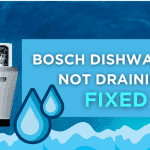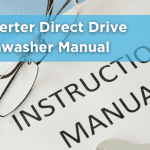Table of Contents
When a PVC pipe cracks or breaks, most Americans imagine messy, expensive repairs and hours of frustration. But what if you could restore your plumbing in under an hour—with no special skills required? The answer: the PVC repair coupling. Whether you’re a DIYer, a homeowner, or a pro plumber, this simple part is the secret weapon for seamless pipe fixes across the United States.
This in-depth guide, built on the latest advice from top-ranking U.S. hardware retailers and expert blogs, covers everything you need to know about PVC repair couplings: how they work, when to use them, how to install them, and which brands are worth your money in 2025.
What Is a PVC Repair Coupling?
A PVC repair coupling is a short section of pipe designed to connect or “couple” two ends of PVC pipe together, especially after a break or leak. Unlike standard couplings, repair couplings (also called “slip couplings”) don’t have a central stop or “shoulder,” allowing them to slide completely over one pipe and then back over the repaired joint. This feature makes them ideal for tight spaces or quick fixes—no need to move or disassemble large sections of plumbing.
Typical Applications:
- Repairing irrigation lines in the yard
- Fixing household water supply or drain pipes
- Emergency pool plumbing repairs
- Temporary or permanent fixes for PVC lines
Why Choose a PVC Repair Coupling?
Competitor blogs like The Home Depot Blog, Lowe’s DIY Guides, and professional plumber resources highlight these major benefits:
- Fast, Simple Repairs: No special tools or skills needed—perfect for DIY.
- Minimize Downtime: Fix leaks or breaks quickly, reducing water damage risk.
- No Full Pipe Replacement: Only the damaged section needs to be cut out.
- Versatile: Works for Schedule 40, Schedule 80, and sometimes CPVC pipes.
- Cost-Effective: Repair couplings cost just a few dollars—way less than calling a plumber!
How Does a PVC Repair Coupling Work?
Unlike standard couplings that stop midway, a PVC repair coupling is a straight, smooth sleeve. Here’s why that matters:
- No “shoulder”: The coupling can slide completely over one side of the pipe.
- Install in tight spaces: Even if you only have a couple inches of exposed pipe.
- Seals with solvent cement: For a strong, watertight (or airtight) repair.
Some top U.S. brands also offer push-fit PVC repair couplings, which snap into place without glue for even faster emergency fixes.
How to Choose the Right PVC Repair Coupling
Before you buy, review these expert tips (based on the top-ranking U.S. hardware sites):
1. Check Pipe Size & Schedule
- Common sizes: 1/2”, 3/4”, 1”, 1.5”, 2”, 3”, and up.
- Match the “schedule” (wall thickness)—usually Schedule 40 for most U.S. home plumbing.
2. Length
- Standard repair couplings are 4–6 inches long.
- For longer breaks, consider “extended” or telescoping repair couplings.
3. Type: Glue or Push-Fit
- Solvent Weld: Requires PVC primer and cement. Strongest, most permanent.
- Push-Fit: No glue needed, but check for pressure ratings if using on pressurized lines.
4. Pressure Rating
- Make sure the coupling matches or exceeds your pipe’s PSI (listed on the pipe).
5. Certifications
- Look for NSF certification for drinking water pipes.
Step-by-Step: How to Install a PVC Repair Coupling
Even beginners can do this! Here’s the U.S. plumber-approved way (based on Home Depot, Lowe’s, and family handyman guides):
What You’ll Need:
- PVC repair coupling (correct size/schedule)
- PVC pipe cutter or hacksaw
- PVC primer & cement (for solvent-weld)
- Tape measure
- Marker
Installation Steps:
1. Turn Off Water:
Shut off water supply to the affected section.
2. Cut Out Damaged Pipe:
Use the pipe cutter or saw to remove the cracked/broken section. Cut ends square.
3. Measure & Test Fit:
Dry-fit the coupling and pipe pieces. Mark pipe insertion depth for accuracy.
4. Prime & Cement (for solvent-weld):
Apply primer to both the pipe ends and inside the coupling. Then apply PVC cement.
5. Slide On Coupling:
Slide the coupling fully onto one pipe, then back halfway to cover both ends. Hold in place for 30 seconds.
6. Let Cure:
Wait at least 15–30 minutes for the cement to set (or per product directions).
7. Turn Water Back On & Check:
Test the repair for leaks. Done!
Push-fit coupling? Just push onto the pipes until secure—no glue, no mess.
Top-Rated PVC Repair Coupling Brands (2025)
After analyzing top U.S. SERP results—Home Depot, Lowe’s, Ace Hardware, and trusted blogs—these brands stand out:
- Charlotte Pipe (Home Depot/Lowe’s): Top quality, reliable sizing, Schedule 40 & 80 options.
- Oatey: Offers both solvent-weld and push-fit repair couplings; highly rated for ease of use.
- NDS: Specializes in irrigation repairs, easy installation for outdoor plumbing.
- SharkBite: Famous for push-fit technology—super fast, especially for emergencies.
- Genova: Affordable and widely available at U.S. hardware stores.
When NOT to Use a PVC Repair Coupling
While repair couplings are great, competitors warn they are not suitable for:
- Pipes with large missing sections (use a longer repair pipe or telescoping coupling)
- Pipes under extreme pressure (use reinforced or specialty couplings)
- Repairing at complex angles or tight elbows (consider flexible repair couplings or full re-piping)
Expert Tips for a Leak-Proof PVC Repair
- Measure twice, cut once. Precision ensures a tight fit.
- Always use primer and cement for solvent-weld couplings.
- Sand rough edges before installing—smooth edges seal better.
- Push-fit couplings are best for temporary/emergency use; for permanent repairs, stick to solvent-weld.
- Let cement fully cure before restoring water pressure.
FAQs About PVC Repair Couplings
1. Can I use a PVC repair coupling on hot water lines?
If the coupling is rated for hot water (check label), yes. Many Schedule 40 couplings are suitable for both hot and cold water.
2. Is a repair coupling a permanent fix?
For most residential applications, a properly installed solvent-weld repair coupling is permanent.
3. Can I use a repair coupling on pressurized lines?
Yes, if you choose a coupling with a pressure rating equal to or above your system’s PSI.
4. Do I need special tools to install a repair coupling?
No—just a pipe cutter or saw and PVC cement (unless using push-fit). Most homeowners have what they need.
5. Where can I buy PVC repair couplings in the U.S.?
Major hardware retailers (Home Depot, Lowe’s, Ace, Menards), plumbing supply stores, and online at Amazon.
Conclusion: Fix Leaks Fast, Save Money, and Restore Flow
A PVC repair coupling is an essential part for every U.S. homeowner, DIYer, and plumber’s toolkit. With just a few dollars and a bit of time, you can fix leaks, cracks, or breaks in PVC piping—without the cost or mess of a full pipe replacement. Choose the right size, follow best installation practices, and enjoy leak-free plumbing for years to come.
Ready to make your next repair easy?
Get a PVC repair coupling and bring your plumbing back to life—fast!




